Canotia holacantha, Crucifixion Thorn
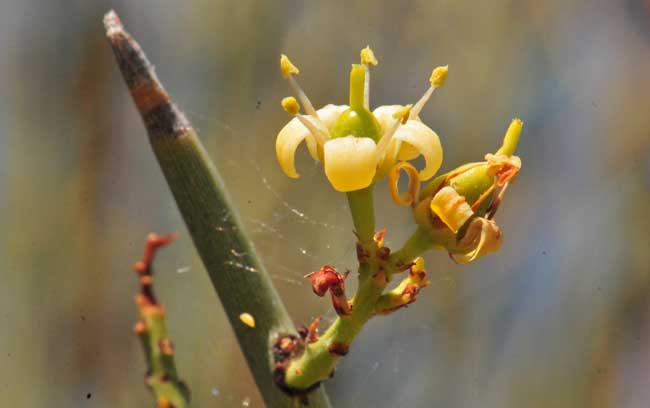
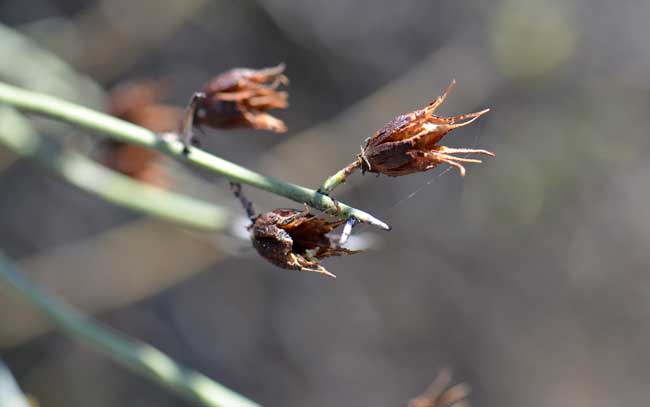
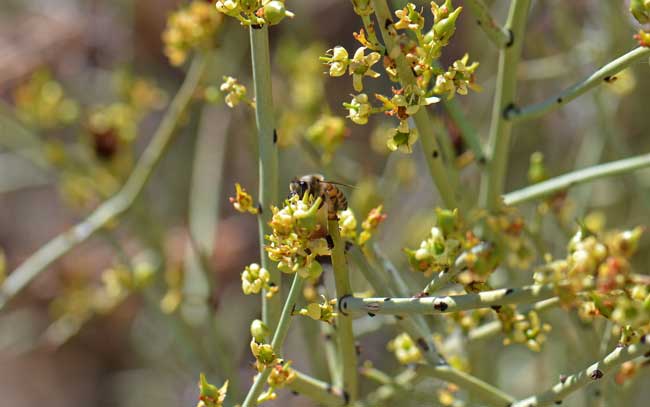
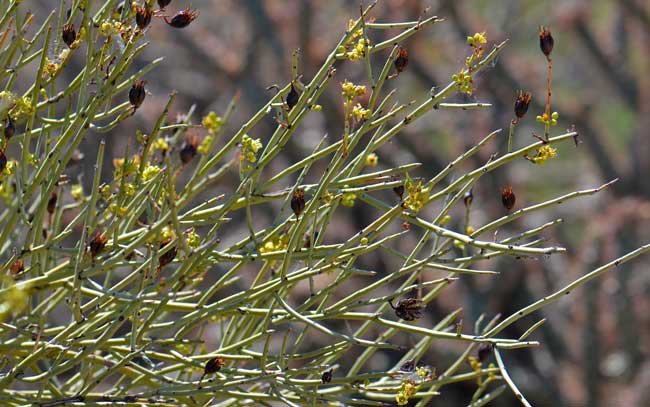
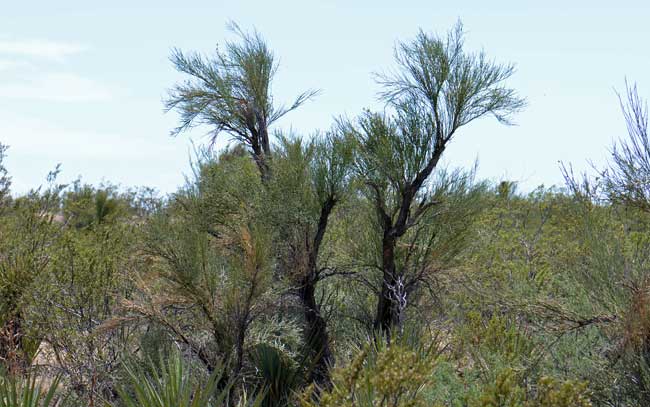
Scientific Name: Canotia holacantha
Common Name: Crucifixion Thorn
Also Called: Canotia; (Spanish: Corona de Cristo, Junco)
Family: Celastraceae, Bittersweet Family
Synonyms: ()
Status: Native
Duration: Perennial
Size: Up to 15 feet.
Growth Form: Shrub/tree; scrubby looking, branches and twigs gray-green, the green branches are able to conduct photosynthesis, branch tips with sharp thorns.
Leaves: Green; few, alternate, small deciduous scales.
Flower Color: Greenish-white to yellowish-white; several flowers in axillary clusters, sepals greenish-white to yellowish-white, fruit 5 valved woody capsule.
Flowering Season: May to August but as early as March and sometimes as late as September.
Elevation: 2,000 to 5,200 feet.
Habitat Preferences: Dry slopes, washes and mesas in desert grasslands, Pinyon-juniper and Chaparral habitats.
Recorded Range: As a species, Canotia holacantha is rare in the United States where its distribution is limited to the central southern and northwestern parts of Arizona, southeast California and southern Nevada. It is also found in Baja California and northern Mexico.
North America & US County Distribution Map for Canotia holacantha.
U.S. Weed Information: No data available.
Invasive/Noxious Weed Information: No data available.
Wetland Indicator: No data available.
Threatened/Endangered Information: No data available.
Comments: Crucifixion Thorn is common and often one of the dominant species where found, truly a classic landscape feature in Arizona. It is one of three species in the southwest commonly called "Crucifixion Thorn" others are Castela emoryi and Koeberlinia spinosa (also called Allthorn). All 3 species are found in Ironwood Forest National Monument, Pima and Pinal Counties. In Southwest Desert Flora also see Crucifixion Thorn, Castela emoryi.
Canotia flowers are pollinated by insects, particularly bumble bees.
The berries of Canotia holacantha are used as food by the Apache San Carlos Native Americans. See ethno-botanical uses at Native American Ethnobotany, University of Michigan, Dearborn.

